SEO is a way to get more traffic to your website. By ranking high on Google, you attract more people to your site, which leads to more sales and returning visitors. You must optimize your content for the right words to get people to your site. However, you should consider search intent to increase your chances of ranking, convincing people to buy your stuff, subscribing to your newsletter, or even returning to your website. In this post, we’ll tell you what search intent is and how you can optimize your content for search intent.
What is search intent?
Search intent (or user intent, audience intent) is the term used to describe the purpose of an online search. It’s the reason why someone conducts a specific search. After all, everyone who does an online search hopes to find something. But is someone looking for an answer to a question they have? Are they looking to visit a specific website? Or are they searching online because they want to buy something? Many of these types of searches are part of the user journey online, but often they represent different stages.
Over the years, Google has worked hard to improve its algorithm to determine people’s search intent. Google wants to rank pages that best fit the search term someone is using and the search intent behind the search query. That’s why you need to make sure that your post or page fits your audience’s search intent.
Four main types of search intent
There are a few distinct types of search intent. We’ll go into the four most commonly used ones, but we’ll start with an infographic describing the four types in short:
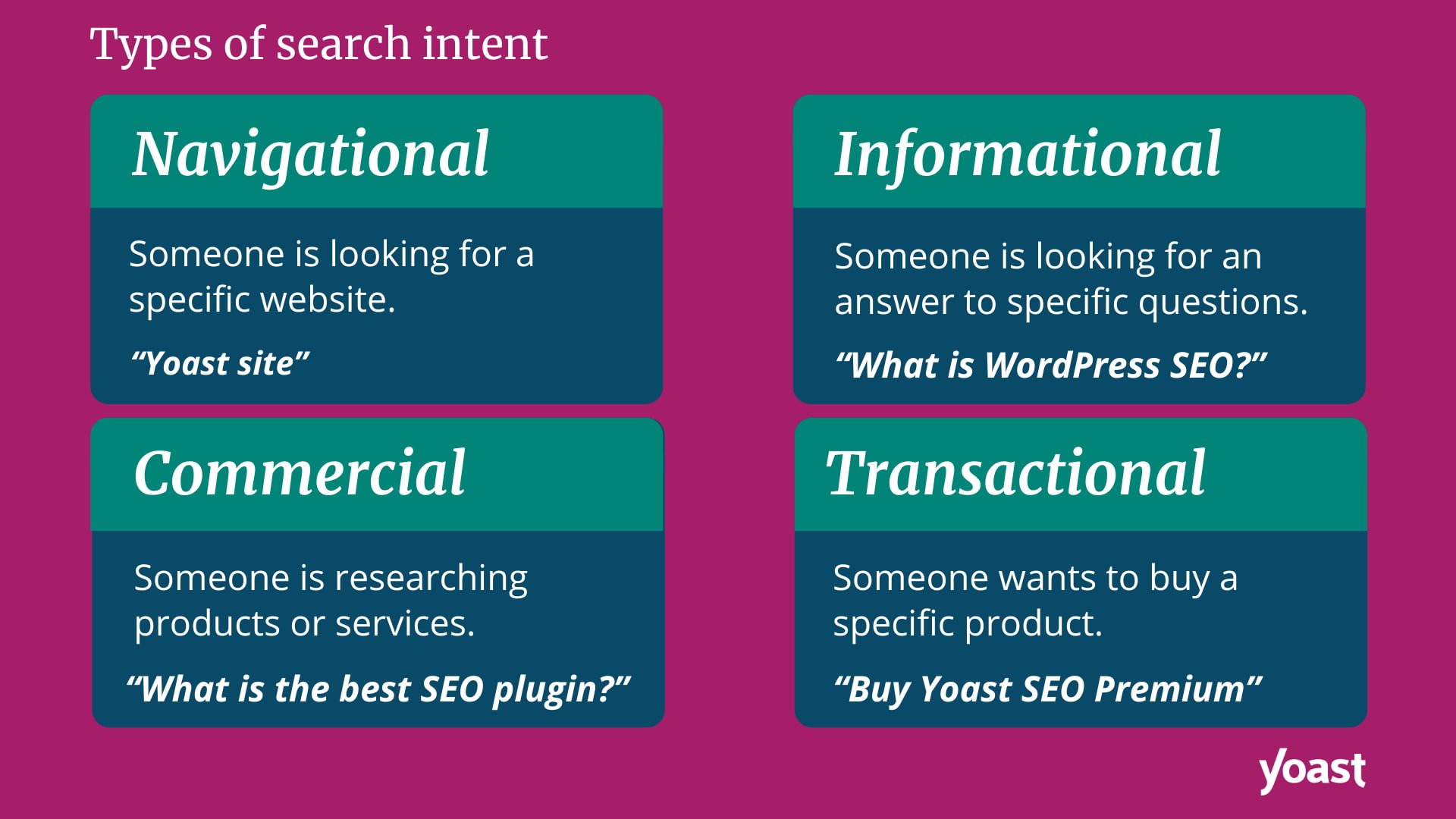
1. Navigational intent
The first type of search intent is called navigational intent. People with this intent want to visit a specific website. For example, people searching for [Facebook] online are usually on their way to the website. So, you want to make sure that your website can be found when someone searches for your company’s name online.
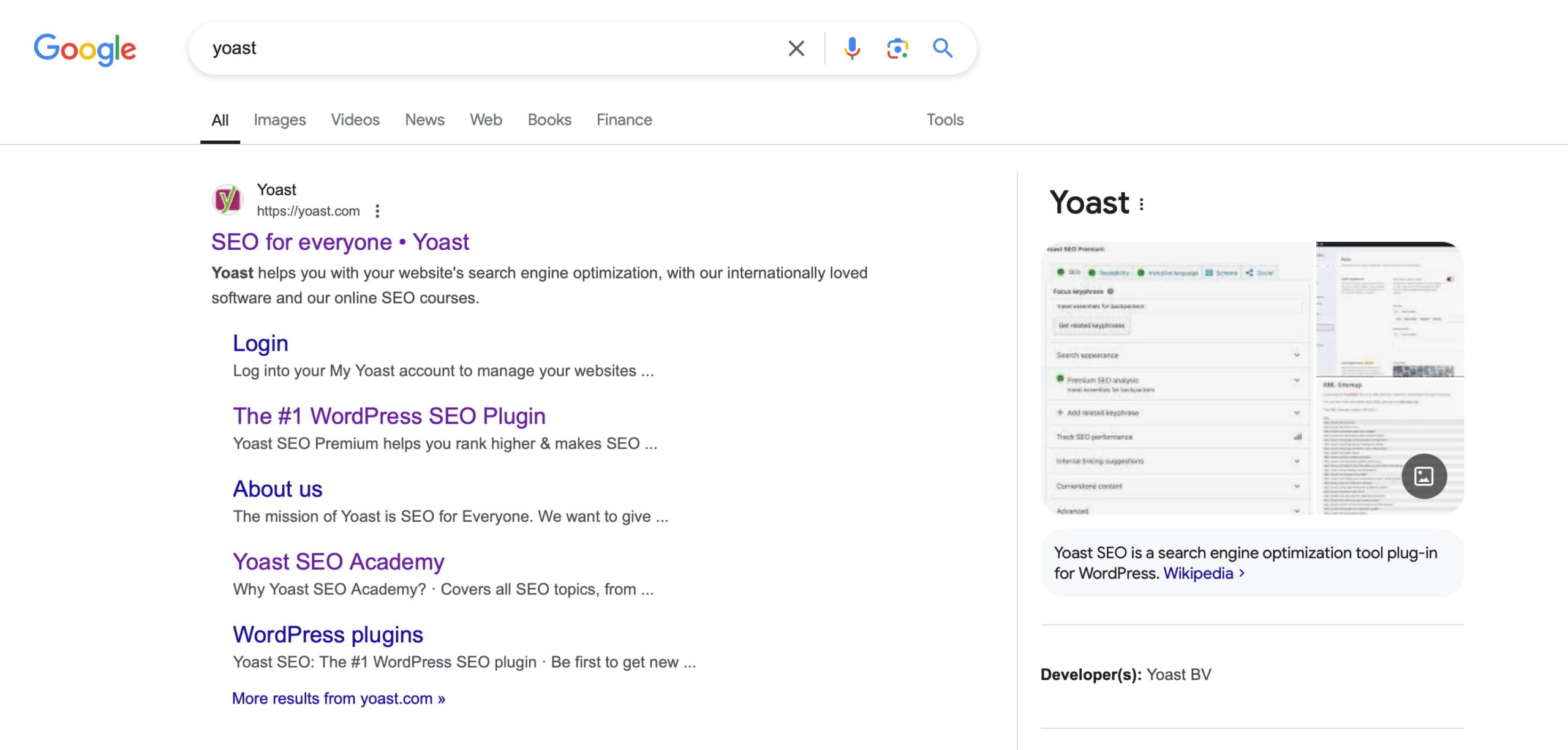
Remember that ranking high for a navigational term is mainly beneficial if your site is what people are looking for. Years ago, we had a Google Analytics plugin that ranked well for the term [Google Analytics]. But that didn’t drive any traffic to our site. People searching for [Google Analytics] specifically were looking for the Google Analytics website and were often not interested in our plugin.
2. Informational intent
On to informational intent. People looking for information do lots of searches on the internet. This could be information about the weather, educating children, SEO, you name it. People with informational intent have a specific question or want to know more about a topic.
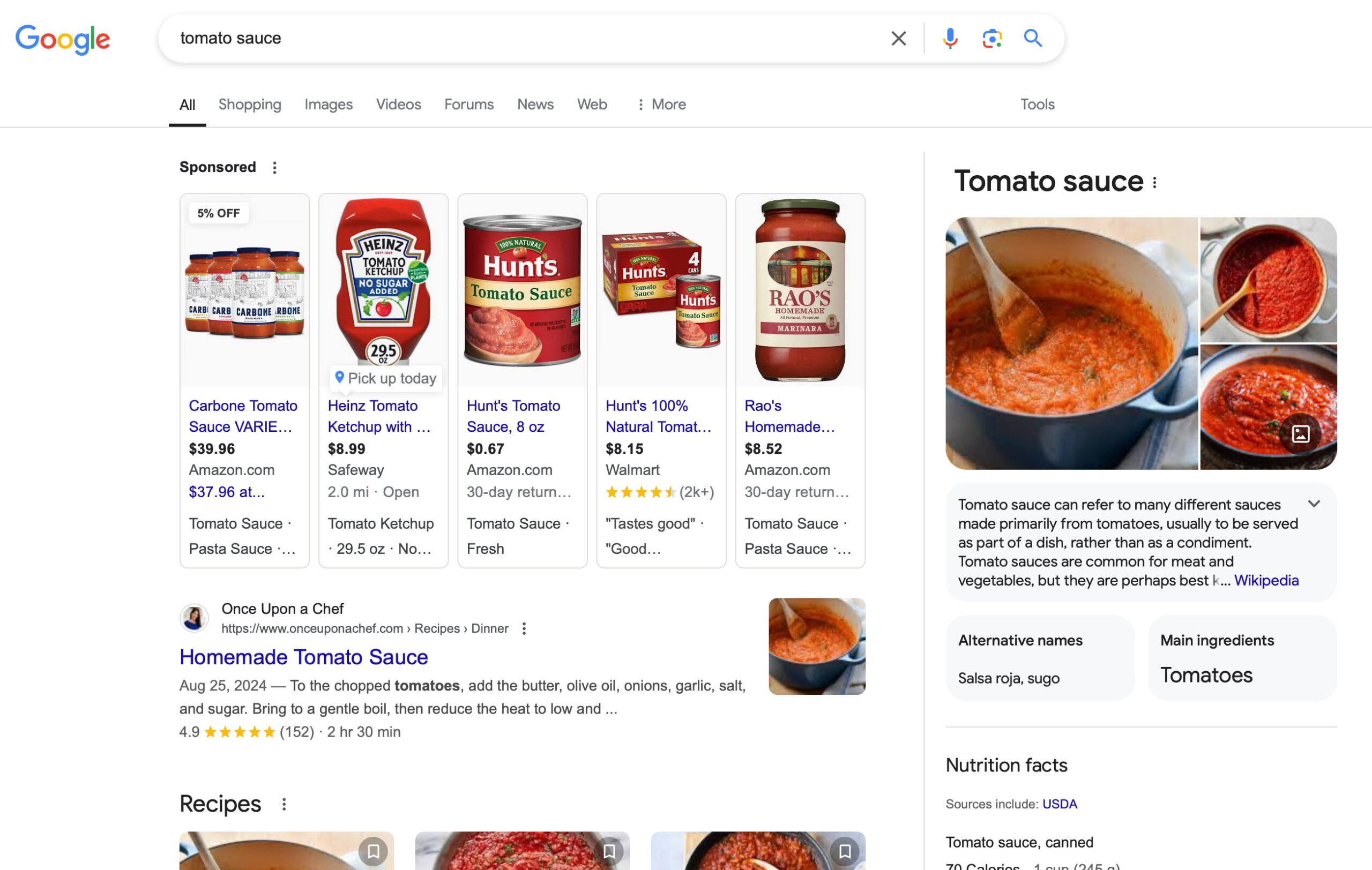
You should know that Google understands intent beyond simply showing results that give information about a specific term. It knows, for instance, that people looking for [tomato sauce] are most likely looking for recipes, not for the sauce’s culinary history. It understands that most people typing in [Mercury] are looking for the planet, not the element. Google even understands it’s handy to include videos and images for search terms, like [how to build a bird feeder].
3. Commercial investigation
Some people intend to buy in the (near) future and use the web to research. What washing machine would be best? Which WordPress SEO plugin is the most helpful? These people also have transactional intent but need more time and convincing. These types of search intents are usually called commercial investigating intents.
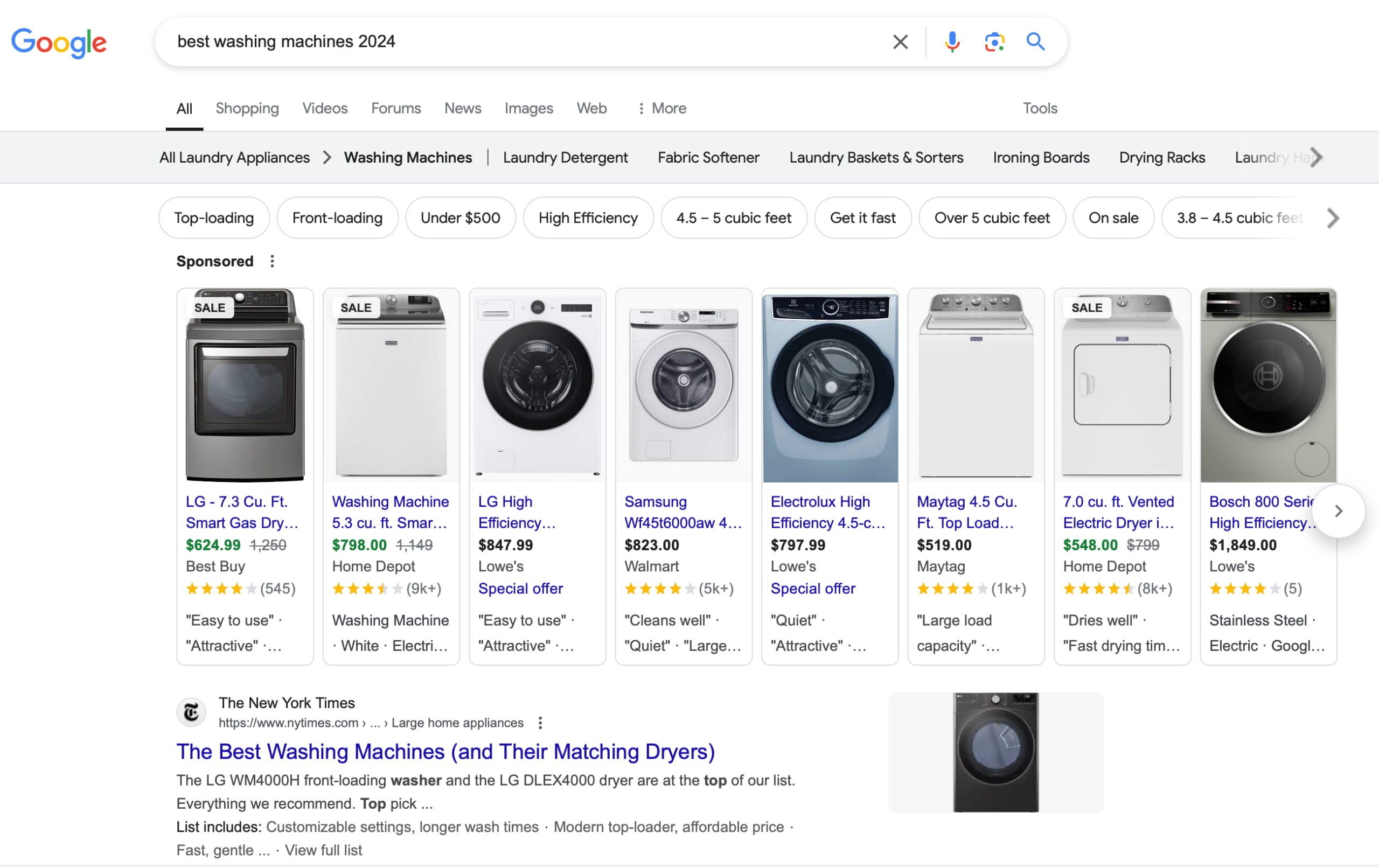
4. Transactional intent
The fourth type of search intent is transactional intent. Many people buy stuff online and browse the web to find the best purchase. People are searching with transactional intent when they intend to buy something at that moment. That means that they already know exactly what they want to buy and want to get to that product page immediately.
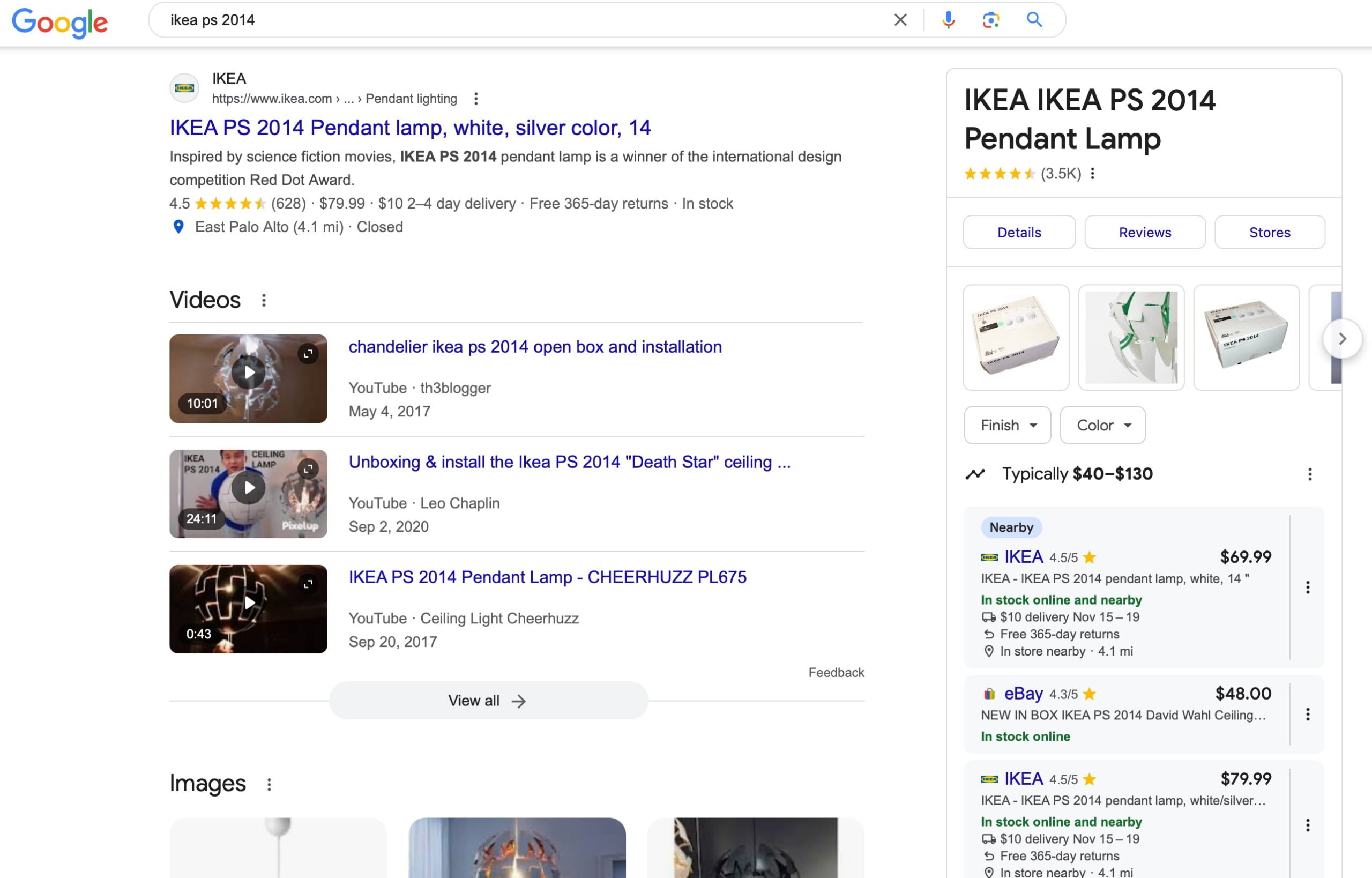
Keyword intent
People’s words in their search queries give us insight into user intent. This also works the other way around. By formulating keywords with intent-specific words, you can increase your chances of being seen by people with matching search intent.
What do we mean by intent-specific words? Well, keywords with transactional intent will often contain words like:
- buy
- deal
- discount
- product names
To give another example, informational searches can (but don’t necessarily have to) contain words like:
- information
- how to
- best way to
- why
How to optimize your content for search intent
Why are we telling you this? Because you want to ensure that a landing page fits your audience’s search intent. If people are looking for information, you don’t want to show them a product page. At least, not immediately. You’ll scare them away. But if someone wants to buy your product and lands on one of your lengthier blog posts, you might lose them. In this case, you want to lead them to your shop and the right product page.
Optimizing your product pages for commercially driven keywords is a good idea. For instance, if you sell vitamins, you could optimize a product (category) page for the search term [buy vitamins]. Perhaps you also have an article about administering vitamins. You could optimize that article for the search term [how to give vitamins to my ] and aim it at people with informational intent.
Research your audience’s search intent
Sometimes, it can be quite hard to determine the search intent of a query. And perhaps different users that use the same search term will have a (slightly) different user intent. Luckily, there is a direct source to look at to know which intent fits your keywords best: the search results pages. Find out how you can use the results pages to create intent-based content.
If you want to know more about your audience’s search intent, another way is to ask them. Create a short survey containing questions about what people are searching for, and make that survey pop up when people visit your website. That’ll give you valuable insights into your audience and their intent. Please don’t be too intrusive with these kinds of pop-ups, as this can hurt the user experience on your website.
Search intent in Yoast SEO with Semrush
Aiming your content with the right intent is important, but it becomes even more important for ecommerce content. Here’s how to apply this with a focus on ecommerce.
Start by identifying the intent behind your main keyword. In ecommerce, this often revolves around transactional or commercial investigation intents. If users are ready to buy (“transactional”), your content should guide them toward purchasing. If they’re still researching (“commercial investigation”), provide comparisons, reviews, or detailed product information.
Look for related keyphrases that match these intents. Use tools like the Semrush integration in Yoast SEO to find variations that potential customers might use. For a keyword like “buy running shoes online,” related phrases could include “discount running shoes,” “running shoes with free shipping,” or “best price running shoes.”
In the Yoast SEO Related Keyphrases interface, the different intents will be color-coded using Semrush’s system:
- C (yellow): Commercial intent
- N (purple): Navigational intent
- I (blue): Informational intent
- T (green): Transactional intent
Examine search results for the keyphrases you’ve found to see what ecommerce sites are doing. Pay attention to product pages, reviews, and comparison guides that rank well. This helps you understand what customers expect and how you can differentiate your offerings.
Incorporate these keyphrases naturally into your product descriptions, category pages, and blog posts. Make sure the content answers potential buyer questions and highlights unique selling points. Include clear calls to action to drive purchases, especially for transactional intent.
If you focus well on search intent, you can create content that improves SEO and enhances the shopping experience. Ultimately, you want higher conversions and better customer satisfaction.
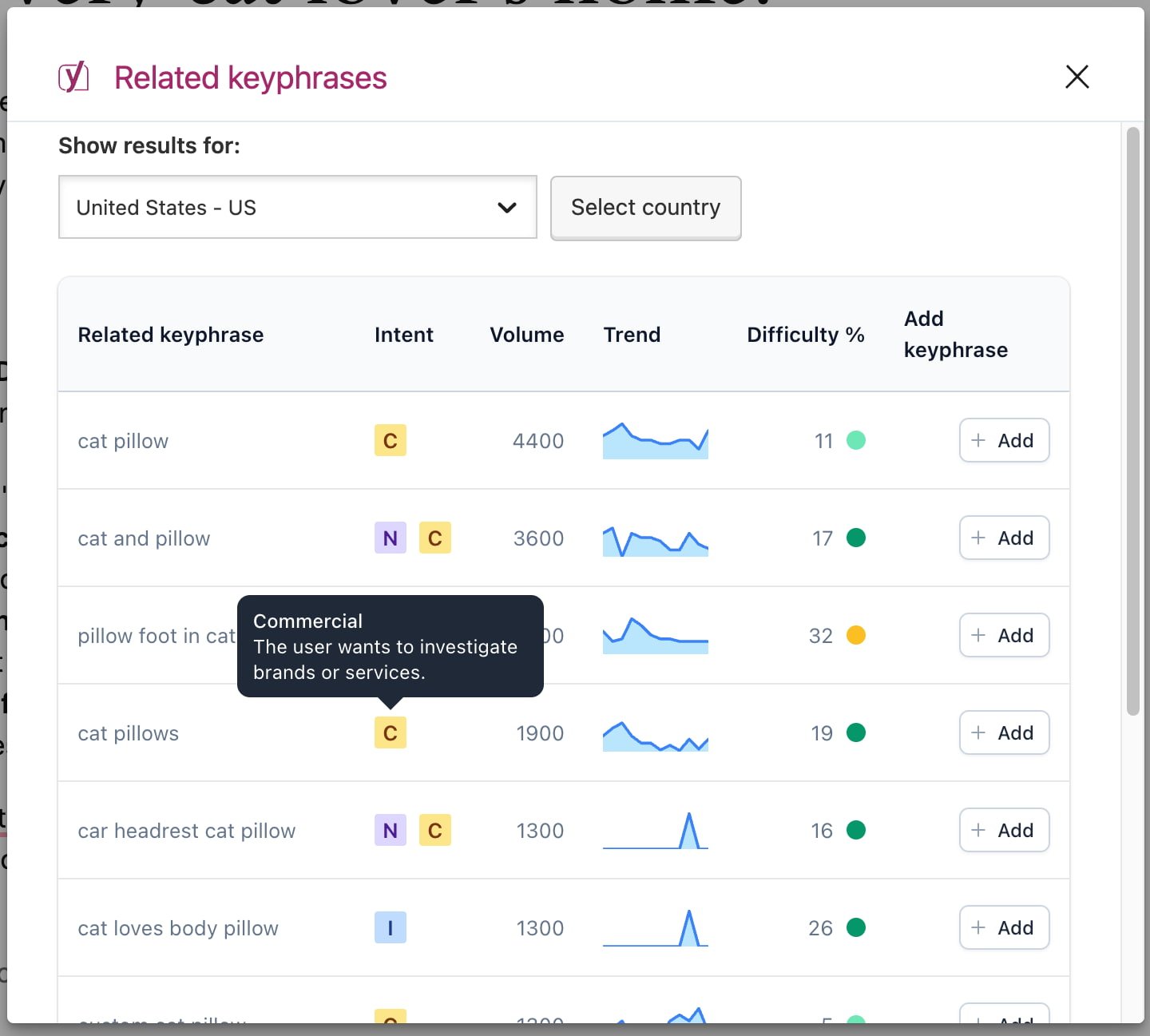
Conclusion on search intent for SEO
It’s crucial to ensure that your content fits the terms people are searching for and your audience’s search intent. Ensure your post or page is informational when people seek information. Be the first result when someone searches for your company name. Provide content that helps people make an informed decision while still investigating their options. But lead people to your sales pages if they want to buy one of your products.
Read more: Keyword research: the ultimate guide »
Source link : Yoast.com

